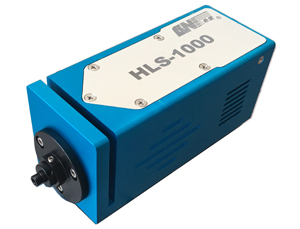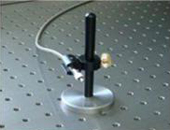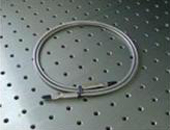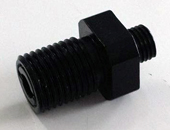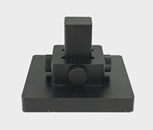**Abstract:**
A novel mesh valve with a self-elastic buffer sheet compressor is introduced. Unlike conventional designs, this valve’s central region lacks an elastic arm and instead functions as an independent elastic body. This design reduces stress during operation, increases the self-rigidity coefficient, and enhances the spring force, leading to improved valve reliability. The finite element method was employed to calculate stiffness, stress distribution, and equivalent mass of the self-elastic buffer sheet, while a corresponding mathematical model for the valve’s working process was developed. This type of mesh valve has been successfully applied in various large and medium-sized compressors, demonstrating excellent performance.
**Keywords:** Compressor; Mesh Valve; Self-Elastic Buffer Sheet; Reliability; Mathematical Model; Application
**Introduction**
Valves are critical and vulnerable components in reciprocating compressors [1]. Mesh valves are commonly used in large and medium-sized reciprocating compressors. Traditional non-friction belt mesh valves use an elastic arm at the center of the buffer sheet, which deforms under spring force. However, these arms experience high stress and have a low rigidity coefficient, limiting their effectiveness. In many cases, a higher stiffness is needed to increase the buffering effect without compromising reliability. This challenge motivates the development of a new self-elastic buffer sheet mesh valve [3].
**Structure of the Self-Populating Buffer Compressor Mesh Valve**
As shown in Figure 1, the valve consists of a seat, valve plate, lift pads, self-elastic buffer sheet, and a lifting limiter. A buffer spring is placed in the outer spring hole, while a valve spring is in the inner one. Unlike traditional designs, the buffer sheet lacks an elastic arm and functions as an independent elastic component. The deformation occurs mainly in the connecting bars, reducing internal stress. Additionally, slots in the buffer sheet help lower its rigidity while maintaining effective sealing.
**Calculation of the Self-Elastic Buffer Sheet**
Figure 2 illustrates the top view of the buffer sheet. Under spring force, the buffer sheet experiences deformation and stress, with maximum deflection at the outer edge and highest tensile stress near the root of the connecting rib. Finite element analysis (FEA) was conducted using ANSYS software [6] to determine the stiffness coefficient and equivalent mass. For a buffer sheet with an outer diameter of 332 mm and thickness of 2 mm, the stiffness coefficient was found to be 3214 kN/m, and the equivalent mass was 0.1318 kg. The maximum tensile stress was 4416 MPa. Compared to traditional designs, the self-elastic buffer sheet offers significantly higher rigidity and lower stress, improving reliability and performance.
**Mathematical Model of the Mesh Valve Working Process**
The mathematical model includes equations of motion, energy conservation, continuity, and boundary conditions. For example, when the valve opens or closes, the equation of motion accounts for the valve disc displacement, gas pressure, and spring forces. When the valve collides with the buffer sheet, the collision dynamics are modeled with a rebound coefficient. Numerical simulations using the fourth-order Runge-Kutta method [1] reveal the valve’s movement, flow capacity, and energy loss. These results show that the self-elastic buffer sheet effectively reduces collision speed, improves timing, and enhances overall valve performance.
**Application of the Self-Populating Buffer Compressor Mesh Valve**
This valve has been widely applied in large and medium-sized compressors, including the H22III-165/320 nitrogen and hydrogen compressor. After implementation, the service life of first-stage valves increased from about one month to over four months, and second-to-fourth-stage valves exceeded six months. No fractures were observed after long-term operation, confirming the valve’s durability. The technology has been promoted in over 20 major compressors nationwide [7], demonstrating high reliability and practical value.
**References**
[1] Lin Mei, Yu Yongzhang. Valve components. See: Yu Yongzhang editor. Volume compressor technical manual. Beijing: Mechanical Industry Press, 2000
[2] Pan Shulin, Lu Zhaoxia, Zhang Zengying, etc. Compressor Compressor technology, 2002 (5): 43 ~ 45
[3] Pan Shulin, Xie Lianhua, Yang Lin. A compressor valve. Chinese utility model patents, ZL98217013.0, 1999
[4] Pan Shulin. Reciprocating compressor mesh valve working characteristics: [Ph.D. Thesis]. Xi'an: Xi'an Jiaotong University, 1996
[5] Ni Zhenhua. Vibration Mechanics. Xi'an: Xi'an Jiaotong University Press, 1989
[6] Tan Jianguo. Finite element analysis using ANSYS6.0. Beijing: Peking University Press, 2002
[7] Pan Shulin, Lu Zhaoxia, Zhang Zengying, etc. Research and application of H22 nitrogen and hydrogen compressor high efficiency valve. Journal of Guangxi University, 2002, 27 (4): 284 ~ 287
**Author Information**
Pan Shulin, male, born in 1970. Associate Professor of Mechanical Engineering at Xiangtan University, Ph.D. Research direction: compressor working process. Published 22 papers.
Gong Shuguang, male, born in 1964. Associate Professor of Mechanical Engineering at Xiangtan University.
Lu, female, born in 1969. Lecturer at Guangxi University School of Chemistry and Technology.
Wolfson, male, born in 1947. General Manager of Wenzhou City, Zhejiang Europe Valve Manufacturing Co., Ltd., Economist.
Optic Fiber Spectrometer
CNI fiber optic spectrometers with the characteristics of compact and portable design, plug and play, easy operation and Spectral Analysis 5.0 software downloads, can replace the old spectrophotometers. They are widely used in Laser wavelength and line width measurement and also the laser excitation fluorescence, Raman and LIBS spectrum measurement.
Fiber optic Spectrometer with the advantages of modularization and flexibility of its measuring system is widely used to measure wavelength and line width of laser, LED and common light source, can accurately obtain the spectral characteristics of the light source which is being tested. CNI developed spectrometers with the characteristics of compact and portable design, plug and play, easy operation and Spectral Analysis 5.0 software downloads, which are extensively applied on the fields of scientific research, teaching, industries and many other applications. CNI can also customize the wavelength and resolution of the spectrometers according to different customers` demands.
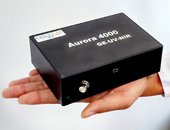
|
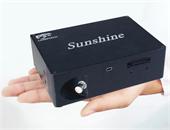
|
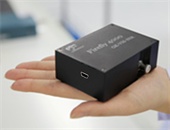
|
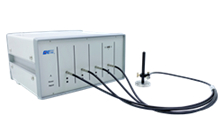
|
|
High Resolution Spectrometer
Aurora 4000
|
High Sensitivity Spectrometer
Sunshine
|
Compact Spectrometer
Firefly 4000
|
Multi- channel Spectrometer
Rainbow series
|
|
Resolution is up to 0.1nm (FWHM)
Application: Laser wavelength
analysis; LED sorting; Chemical,etc
|
Quantum effciency is up to 80%
Application:Raman spectrum;
Semiconductor processing, etc
|
Compact and portable design
Application: Laser wavelength
analysis; Biochemical analysis, etc
|
That is made features of wide
spectral rang and high resoultion,
with synchronous delay device
|
Components & Accessories
Sample Spectrum
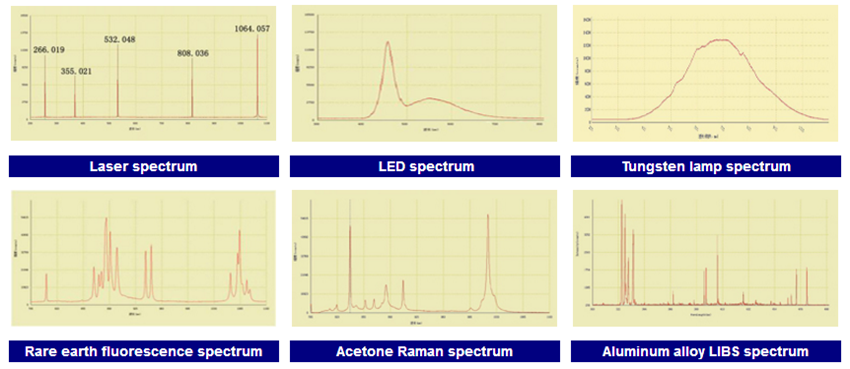
Optical Fiber Spectrometer,X Ray Spectrometer,Fiber Optic Spectrometer,Optic Fiber Spectrometer
Changchun New Industries Optoelectronics Technology Co., Ltd. , https://www.cnioptics.com




